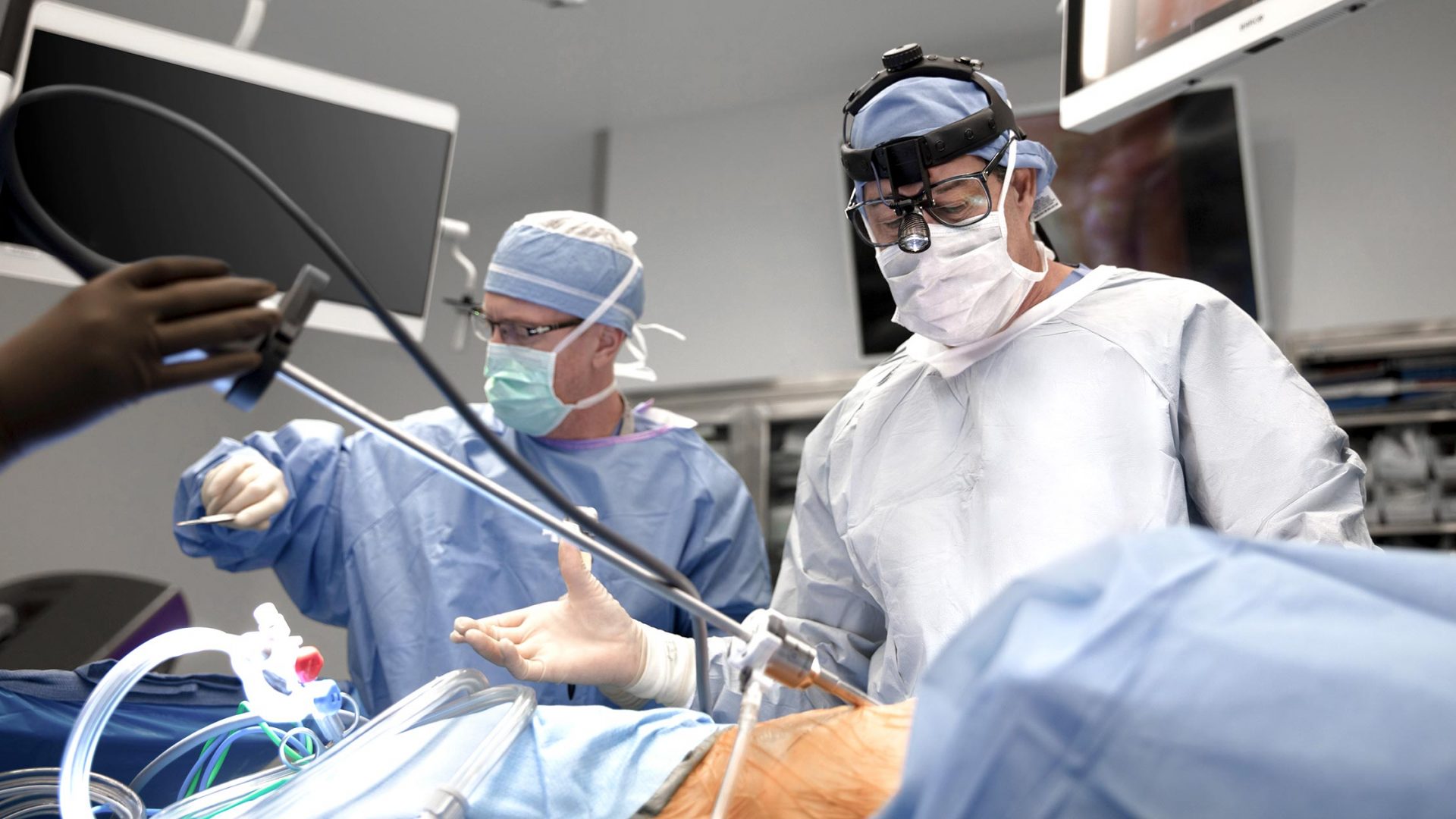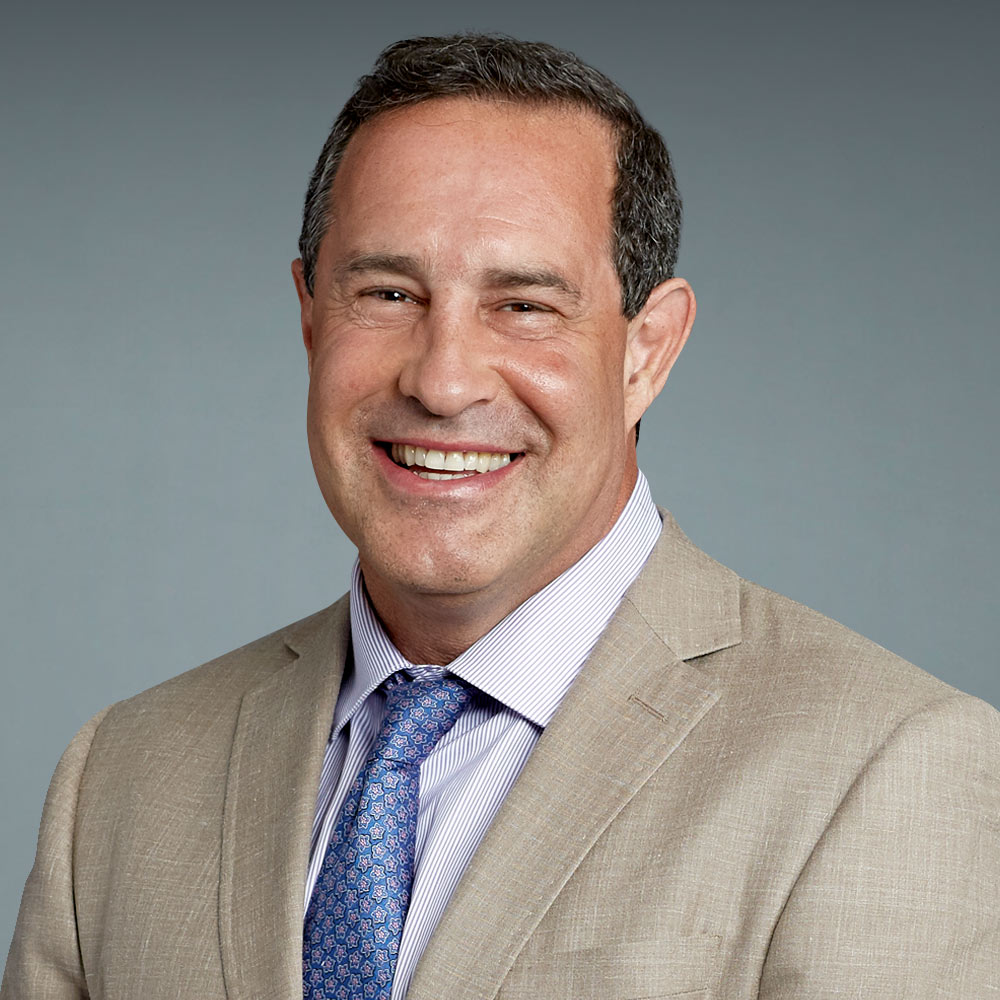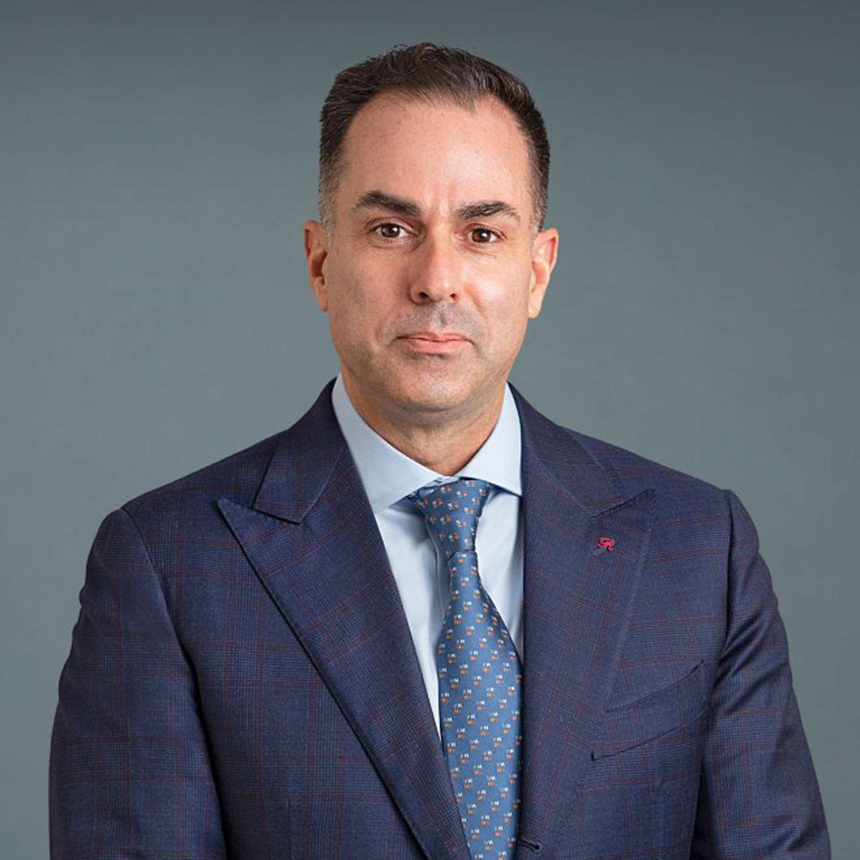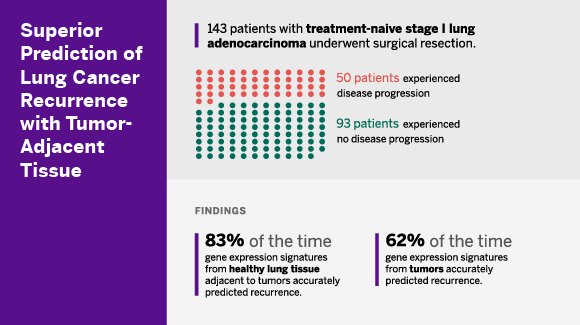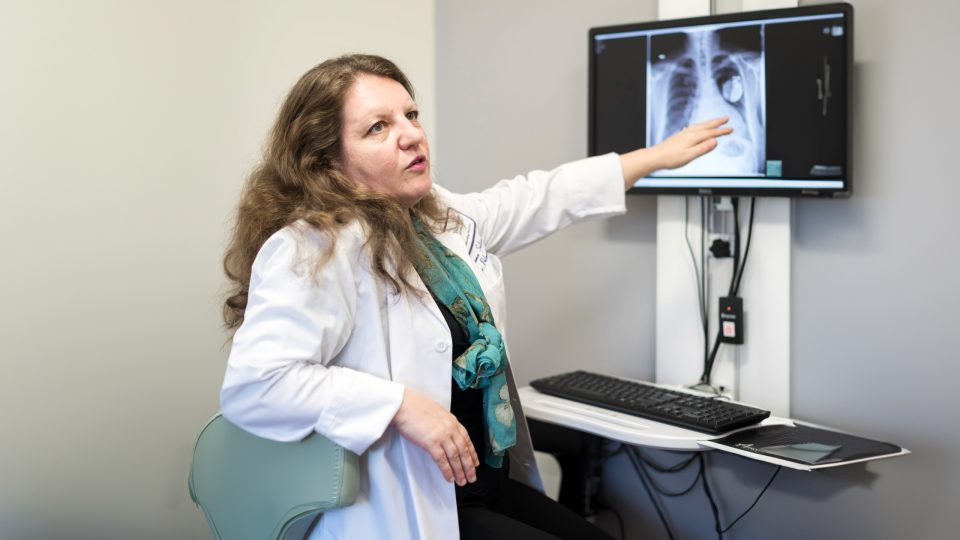The robotics work at NYU Langone Health is building on its proven track record of success. Recently, Michael Zervos, MD, a clinical professor of cardiothoracic surgery and director of robotic thoracic surgery at Tisch Hospital and Kimmel Pavilion, and his team were among the first to perform a lobectomy using a single-port robot.
“The earliest anecdotal evidence is compelling, with some patients foregoing pain medication and being discharged ahead of schedule,” Dr. Zervos says.
“Through years of practice, our division has been a pioneer in developing and advancing minimally invasive robotic surgery.”
Michael Zervos, MD
While the new single-port platform is currently being used in a clinical trial setting, Dr. Zervos is optimistic about the future of the technology, citing the strong potential for broad use across various thoracic surgery procedures.
Leaders in the Robotic Arena
While most thoracic procedures are still performed in a conventional multiport manner, single-port robotic-assisted surgery offers an exciting new premise for innovation in the field.
“Through years of practice, our division has been a pioneer in developing and advancing minimally invasive robotic surgery,” Dr. Zervos says. For over a decade, he and thoracic surgeon Robert J. Cerfolio, MD, chief of clinical thoracic surgery, have been dedicated to propelling robotic surgical technology forward and training surgeons worldwide, positioning themselves as global leaders in the robotic arena.
“Patients travel from around the globe to have us perform their lung resection.”
Robert J. Cerfolio, MD
“We are known all over the world as innovators in surgical techniques, and this extends to postoperative care,” Dr. Cerfolio says. “We are dedicated to our patients, making availability a priority, and patients travel from around the globe to have us perform their lung resection.”
Wins for Patient and Surgeon
Over the past several years, robotic systems for thoracic surgery have evolved rapidly. The newest single-port platforms have many unique advantages over multiport platforms, such as the ability to perform surgery using a single, minimalized incision and to apply a subcostal entry that avoids invasion of the chest cavity.
With these advantages, the procedure leaves little to no scarring and reduces pain, a major benefit compared to other minimally invasive techniques.
“With standard multiport platforms, patients will experience some degree of pain and potentially chronic intercostal neuralgia,” Dr. Zervos says. “With the single-port robot, patients report minimal to no pain after the procedure.”
For the Love of Teaching
While attitudes have begun to change, few programs have fully integrated robotics training into their residency and fellowship curricula. Common barriers include cost and lack of faculty expertise, as well as other factors.
“For many programs, there is a huge gap in implementing education for new technologies like robotic surgery,” Dr. Zervos explains.
To start to close this knowledge gap, Dr. Zervos and Dr. Cerfolio have led the design of unique case observation and training programs, open to both trainees and surgeons from within the United States and around the globe. They hope the programs can surmount some of the barriers to implementing robotics training in thoracic surgery.


